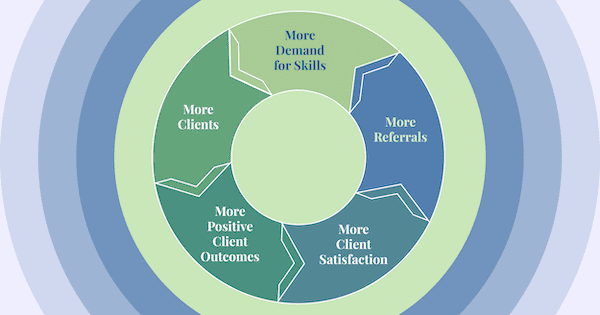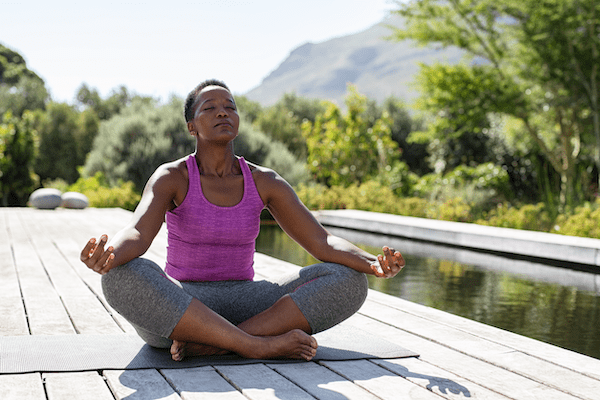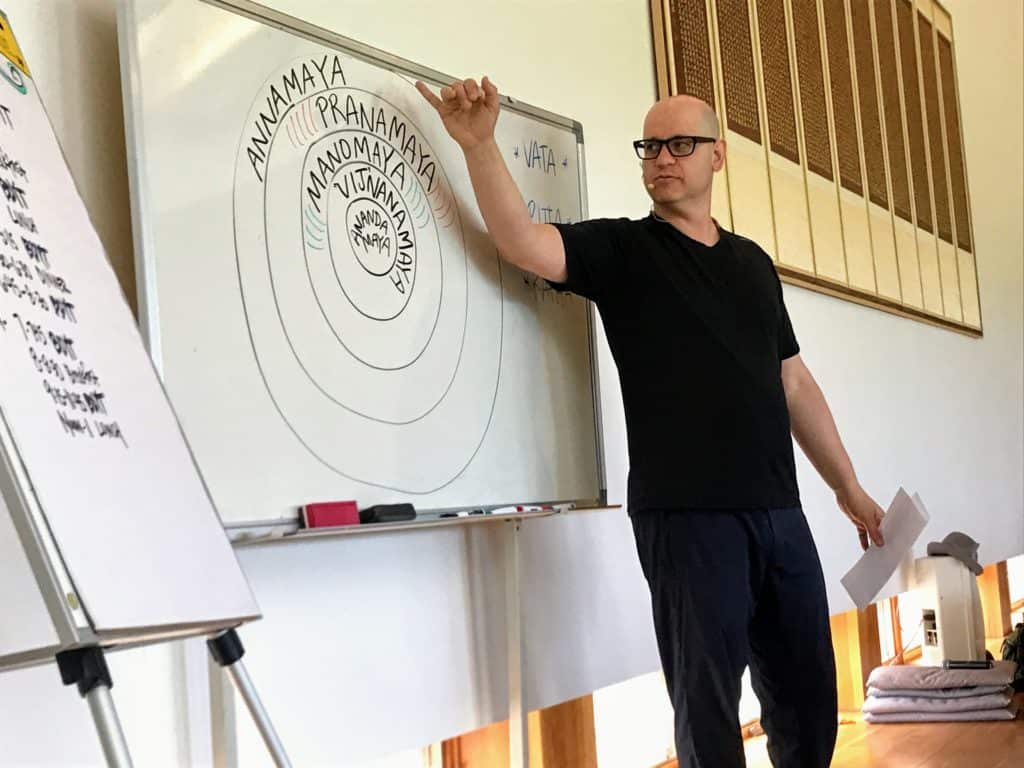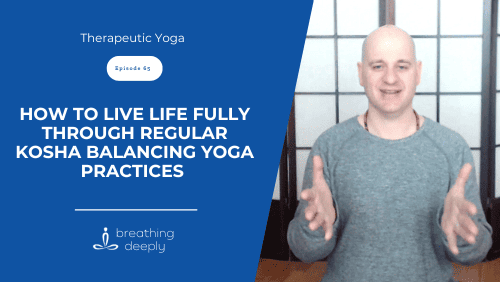
Anyone who has experienced back pain knows how significant its impact can be on your life. It can be just as much of a challenge to find adequate relief. According to the World Health Organization, most people will have back pain at some point in their lives, and lower back pain is the top cause of disability in the world. In the U.S., 8.2% of adults are facing chronic severe back pain, the majority of whom are disabled as a result, the National Center for Complementary and Integrative Health reports. With a growing number of people struggling to find relief, many are considering alternatives to Western medicine, especially comparing yoga vs Pilates for back pain.
Taking either yoga classes or Pilates classes can be beneficial for back pain, depending on your specific circumstances and needs. These group classes can be especially helpful for addressing mild and non-specific back pain, as well as preventing back pain in the future. But it’s important to understand that back pain isn’t just one thing—it can be caused by a range of different conditions. Working one-on-one with a certified yoga therapist can help you treat a specific back diagnosis, learn techniques to practice on your own, and get you to a place where a yoga or Pilates class is enough to keep back pain at bay moving forward.
Keep reading to learn more or contact us today if you are interested in working with a yoga therapist for back pain.
Table of Contents:
- What Is Yoga?
- What Is Pilates?
- What Is Yoga Therapy?
- Yoga vs Pilates Classes for Back Pain
- Limitations of Yoga vs Pilates for Back Pain
- How Can Yoga Therapy Help with Back Pain?
- Work with a Yoga Therapist for Back Pain
What Is Yoga?
Yoga is an ancient practice. Its origins stretch back to ancient India, with the earliest references to yoga found between 1000–200 BCE. Yoga encompasses a wide range of disciplines, practices, and traditions.
Techniques can include:
- Asanas (yoga poses)
- Pranayama (breathing exercises)
- Meditation
- Chanting
- And more
For some, yoga is just a fitness routine. It can be a great way to get active, tone your muscles, and improve your flexibility, posture, and balance.
But for many more, yoga is a lifestyle that supports holistic health and wellness. Yoga can promote better physical, mental, emotional, and spiritual health.
What Is Pilates?
Pilates is a fitness training method. It was created by Joseph Pilates in the 1920s, though there are several different versions of Pilates taught and practiced today.
As a mind-body exercise, Pilates focuses on practicing physical poses with proper alignment and breathing to improve both physical and mental health. Most Pilates exercises use your own bodyweight, making them readily accessible to a wide audience, just like yoga. However, Joseph Pilates originally developed his fitness regimen with specific equipment or “apparatuses,” such as the Reformer. Some Pilates exercises today still make use of weights, resistance bands, and specialized equipment.
The main goals of Pilates are more narrow than those of yoga, though all of them are also common goals in yoga. These include:
- Physical and mental health
- Core strength
- Flexibility
- Balance
- Posture
- Breathing
What Is Yoga Therapy?

Yoga therapy is a specialized form of yoga whose aim is therapeutic. It involves applying the techniques of yoga (such as asanas, pranayama, meditation, or chanting) therapeutically to address specific health conditions. These conditions can be physical, mental, emotional, or spiritual.
While yoga classes and Pilates classes are made for groups of people to practice together, yoga therapy is intended for one-on-one sessions. This is because yoga therapy is tailored to each individual and their body, history, health conditions, contraindications, and desired outcomes.
Not only is a one-on-one format more conducive to adapting and adjusting techniques, but also to taking a trauma-informed approach. Yoga teachers and Pilates instructors, by contrast, are not generally trained to treat trauma or specific health conditions or diagnoses.
Yoga vs Pilates Classes for Back Pain
So, how does all of this relate to back pain? If you’re like most people considering yoga vs Pilates for back pain, you want to know which one is going to be better for you.
Either yoga or Pilates classes can be effective for back pain under the right circumstances. In general, group classes like these work best for those who have back pain that is mild and non-specific. Gentle yoga classes can be an especially good option for those who are already experiencing pain. We would not recommend trying both yoga and Pilates classes for back pain, as you may overexert yourself and exacerbate the problem.
Always check with a doctor first to see if your back pain is diagnosable and if it involves any contraindications, such as yoga poses or Pilates exercises that would be unsafe for you. If you have back pain that is severe or chronic, or if you have a specific diagnosis for your back pain, then yoga therapy will likely work better and be safer for you. Contact our team to see if yoga therapy is right for you.
Once your back pain has been relieved or is under control, yoga or Pilates classes can be a great way to maintain your health and prevent future back pain.
1. Strengthen and Build Flexibility in Core and Back Muscles

When core or back muscles are weakened, lacking in mobility, or lacking in motor control, it can cause back pain. More specifically, a study in the Journal of Physical Therapy Science found that common causes of chronic low back pain included weak shallow trunk muscles, weak abdominal muscles, weak deep trunk muscles, and poor control over deep trunk muscles.
Both yoga and Pilates strengthen core and back muscles, aiding back pain prevention and relief. Pilates is heavily focused on core strength, targeting abdominal, upper back, and lower back muscles. While yoga doesn’t concentrate as narrowly on your core and back, there are plenty of poses that can keep these muscles strong.
It’s also important to make sure these muscles are flexible. Losing mobility in your core or back can make it difficult to maintain good posture, leading to slouching and back pain. Yoga and Pilates each offer you stretches that can lengthen your core and back muscles, improving their flexibility.
2. Keep Your Spine Healthy
One of the major causes of low back pain is spinal degeneration and injury, according to the Mayo Clinic. Yoga and Pilates both have the benefit of promoting good spinal health.
Some studies have shown that practicing yoga can have a positive impact on spinal flexion (bending forward) and spinal extension (bending backward). Yoga can both strengthen and stretch the muscles that support your spine, helping you to properly bend and stabilize your spine.
According to a study in the Asian Journal of Sports Medicine, Pilates provides “a core stability approach to augment the neuromuscular system to control and protect the core body or spine.” It uses core stabilizing exercises and breath control to activate muscles that support lumbopelvic stability.
3. Correct Posture Problems
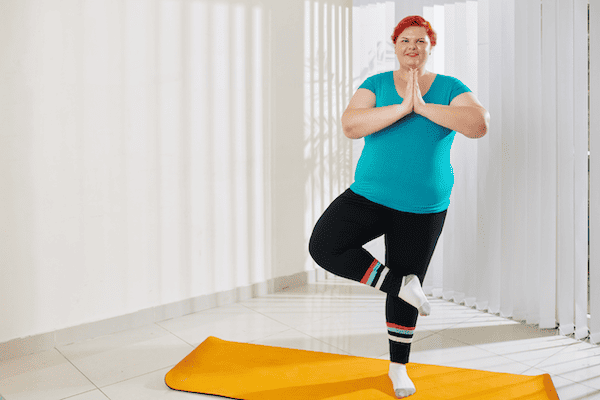
Poor posture can lead to back pain, whether it’s from aging, genetics, illness, or keeping your body in the same position for long periods of time. Practicing proper alignment, becoming aware of your posture, and getting into the habit of using good posture can help make you less likely to develop back problems.
In addition to improving your core strength to support good posture, yoga can help to stretch your muscles and teach you proper alignment for your body. As you practice aligning your body and become more mindful by practicing yoga, you should notice your posture and be able to correct it more easily.
Likewise, Pilates can increase your core strength, stretch your muscles, and model good alignment for you. It is especially concerned with smaller, more stabilizing movements that strengthen core muscles, which, in turn, better protect your spine.
4. Improve Overall Health
Depending on your current health and levels of activity, simply practicing yoga or Pilates can improve your overall health. If you live a sedentary lifestyle, either of these disciplines can get you physically active and support better fitness, postural awareness, and weight loss. In some cases, this can be enough to help alleviate back pain that is mild and non-specific.
5. Gentle Yoga for Those in Pain
Gentle yoga is a subset of yoga designed to be easier, less intense, slower paced, less strenuous, more relaxing, and even quieter. Often using low-impact and seated poses, it can be more accessible to those of various fitness and mobility levels.
It can also be a good option for those experiencing mild and non-specific back pain. As reported by NPR, research has shown that gentle yoga can reduce back pain and improve functioning as effectively and safely as physical therapy.
For those who are weighing yoga vs Pilates for back pain, there is often a concern that yoga classes and Pilates classes have the potential to result in back injury. Gentle yoga presents an option that can make this less likely.
Limitations of Yoga vs Pilates for Back Pain
When comparing yoga vs Pilates for back pain, there are a number of limitations for both group classes to keep in mind. For cases when yoga or Pilates classes are not a good fit for relieving back pain, yoga therapy can be an excellent alternative that avoids these limitations.
1. Better for Preventing Back Pain Than Fixing It
Oftentimes, yoga and Pilates classes work better for preventing back pain. Many of their benefits—including strengthening your core and back, maintaining flexibility in your core and back, supporting spinal health, and promoting good posture—are key for keeping back pain at bay.
But if you’re facing back pain that is severe, chronic, or caused by certain health conditions, general yoga or Pilates classes aren’t likely to help. In fact, they can actively make things worse by potentially causing further injury.
2. Don’t Account for Common Back Pain Contraindications
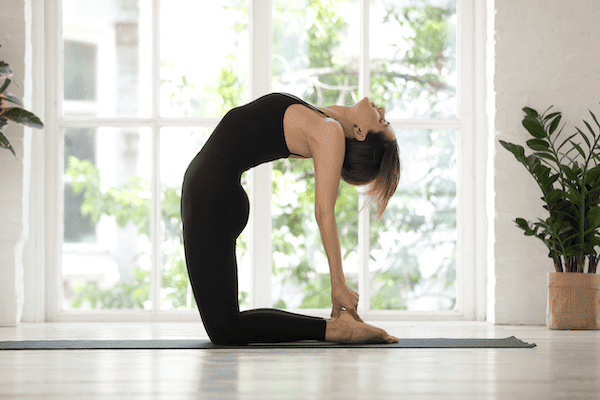
If your back pain is caused by a specific health condition, there may be certain contraindications that go along with your diagnosis. Contraindications include medications, surgeries, and activities that could be harmful or dangerous in your condition.
For many back conditions and injuries, you either shouldn’t bend backward or bend forward. There are numerous backbends and forward bends among yoga poses. While forward bends seem less common in Pilates, you may come across them and will likely encounter some backbends. A group class, especially one that isn’t specifically for back pain, has no reason to avoid these movements—even if you do.
3. Don’t Adapt Poses to Individuals
Similarly, group classes are made to meet the needs of most people attending. They aren’t set up to be tailored to individual people’s needs.
If you’re dealing with back pain that requires specific techniques and has to avoid specific contraindications, you aren’t likely to find a good match in a group class. You may often need practices to be adapted to your situation in order to be safe and effective.
4. Not Trained to Treat Specific Diagnoses
Even if group classes were designed to address your specific needs, the teachers would generally lack the necessary training to treat back pain. Yoga teachers and Pilates instructors aren’t educated in anatomy or pathology. They aren’t trained to apply techniques therapeutically or address specific health conditions.
Fortunately, yoga therapists are!
How Can Yoga Therapy Help with Back Pain?

Yoga therapy gives you the individualized attention and therapeutic application needed to address a wide variety of causes of back pain. A yoga therapist will work with you to find the techniques that bring you healing and relief. Not only that, but they will teach you how to practice these techniques yourself, giving you more agency over your own health.
Once your pain starts to subside, your function starts to improve, and you get a strong grasp on the yoga practices you’re using, our job is done! We’re here to support you and give you the tools you need, so you eventually don’t need us to be able to manage your back health. At that point, you can continue practicing the yoga techniques you’ve learned as needed or even join a yoga or Pilates class that is a good fit for preventing back pain and supporting overall health.
Keep reading for more information about how yoga therapy may be a better solution than comparing yoga vs Pilates for back pain. If you’re ready to get started, reach out about working with our yoga therapists.
1. Address Specific Pathologies
As opposed to group classes for yoga or Pilates for back pain, yoga therapy is equipped to apply specific yoga techniques to address different pathologies. Yoga therapists can work with a wide variety of clients with back pain, including those with:
- Disc problems
- Sciatica
- Spinal stenosis
- Spondylolisthesis
- Upper Cross Syndrome
- Osteoporosis
- Chronic back pain
- Non-specific back pain
- And more
2. Improve Chronic Back Pain
Studies have shown that yoga can be an effective treatment for mild, moderate, and severe chronic low back pain, as the National Institutes of Health has reported. It’s important to note that this research relied on “a carefully adapted set of yoga postures,” which can be combined with breathing exercises or meditation, as you would find in one-on-one sessions with a yoga therapist. Significantly more people who practiced yoga for back pain reported lower levels of pain and higher levels of physical function.
3. Reduce the Pain Response
Yoga therapy can be instrumental in managing back pain when it does occur. The mind-body connection fostered by yoga promotes relaxation, minimizing stress and improving pain management. A trained yoga therapist can also teach you how to regulate your nervous system responses. You can learn how to use yoga practices like meditation and certain breathing techniques to reduce your pain response when you do experience back pain.
Work with a Yoga Therapist for Back Pain

Are you ready to work with a yoga therapist? Don’t waste another minute in pain without a solution in sight.
As a leading yoga therapy school, we have access to the greatest talent in the industry. From our founder, Brandt Passalacqua, who has 20 years of experience successfully helping thousands of clients, to the highly knowledgeable and trained yoga therapists we have vetted ourselves through our program, we’re well-equipped to find the best person to meet your needs.
Learn more and contact us today about using yoga therapy for back pain.



